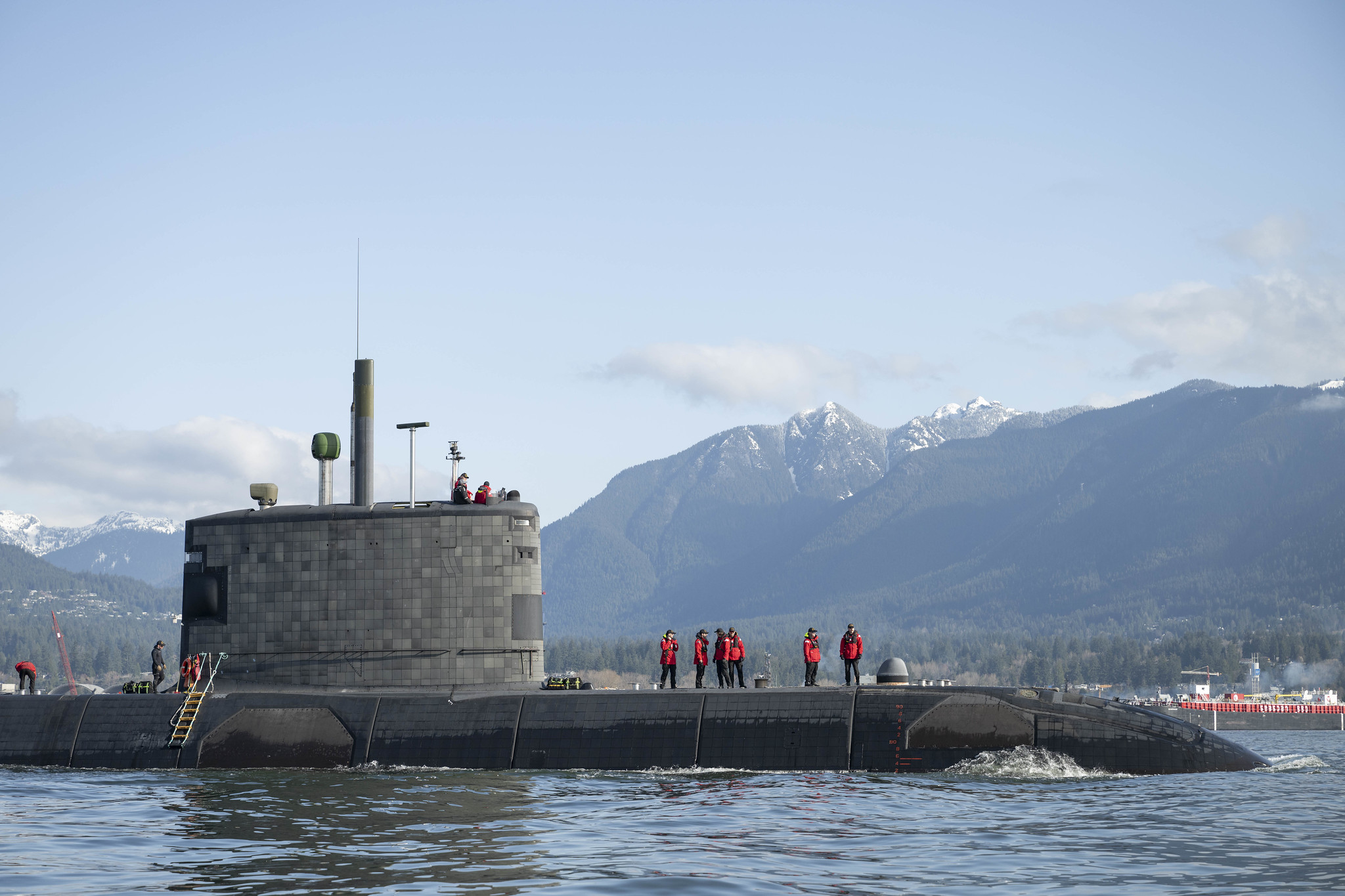
The Royal Canadian Navy (RCN) is poised to modernize its underwater capabilities, with plans to replace its vintage Victoria-class submarines reaching a critical juncture.
In a recent interview with CTV News, Vice-Admiral Angus Topshee, Commander of the RCN, emphasized the urgency of selecting a provider for the new submarine fleet by the end of 2025, stating that “there is a path” for the federal government to make this pivotal decision within the year. This move comes as part of a broader effort to bolster Canada’s naval strength amid evolving global security challenges and increasing demands for Arctic sovereignty.
The Need for New Submarines
The RCN currently operates four Victoria-class submarines, acquired second-hand from the United Kingdom in the late 1990s. These diesel-electric vessels, while still operational, are approaching the end of their service life and face challenges with maintenance and technological obsolescence. The need for a modernized fleet has become more pressing due to Canada’s vast maritime domain, particularly in the Arctic, where climate change is opening new shipping routes and increasing geopolitical interest from nations like Russia and China.
Submarines are a critical asset for the RCN, enabling stealthy surveillance, intelligence gathering, and deterrence in both coastal and international waters. They play a vital role in protecting Canada’s sovereignty, securing its maritime borders, and contributing to NATO and NORAD commitments. Admiral Topshee has highlighted the strategic importance of submarines, noting their ability to operate undetected and project power in contested regions. A modern fleet would also enhance Canada’s interoperability with allies, particularly the United States, as part of joint defence initiatives.
Admiral Topshee’s Call for Action
In his remarks to CTV News, Vice-Admiral Topshee underscored the importance of moving quickly to select a submarine provider, signalling confidence in the government’s procurement process. “There is a path for the federal government to decide which company will replace Canada’s aging submarine fleet by the end of the year,” he said, emphasizing the need to maintain momentum in the acquisition process. His comments reflect a sense of urgency, as delays in procurement could jeopardize the RCN’s operational readiness and leave Canada vulnerable in an increasingly complex global security environment.
Topshee’s push for a decision by year’s end aligns with the government’s timeline to have the first new submarine delivered by 2035. This ambitious schedule requires swift action to evaluate proposals from international shipbuilders, finalize contracts, and begin the complex process of designing and constructing the new vessels. The commander’s remarks also suggest a streamlined approach to procurement, learning from past challenges in Canada’s defense acquisitions, which have often been plagued by delays and cost overruns.
International Interest and Potential Providers
The Canadian government has already begun soliciting requests for proposals from leading global shipbuilders, with several nations expressing interest in supplying the new submarines. Germany and Norway, in particular, have urged Canada to consider their proven designs, citing the reliability and interoperability of their submarine platforms. South Korea has also emerged as a contender, with its KSS-III Batch-II submarine being promoted as a capable option for Canada’s needs.
The competition is expected to be fierce, with companies like Germany’s Thyssenkrupp Marine Systems, France’s Naval Group, and Sweden’s Saab Kockums among the likely bidders. Each offers advanced diesel-electric or air-independent propulsion (AIP) submarines, which provide enhanced stealth and endurance compared to the current Victoria-class fleet. The selection process will prioritize vessels that can operate effectively in Canada’s unique maritime environment, including the icy waters of the Arctic, while meeting stringent requirements for cost, technology transfer, and domestic industrial benefits.

These assets are absolutely vital and, like most of the Navy’s vessels, are long, long overdue. Budgeting and procurement are so poorly managed that the Navy inevitably decommissions its vessels long before their replacements even start to be built. NOT a recipe for preparedness! Once the 3rd largest Navy in the world, our government has allowed our Navy to fall far behind both the Army and the Air Force in both manpower and assets. We are a major maritime nation, and yet our Navy is treated as a 3rd class citizen. It doesn’t help that the unification of the Armed Forces some 60 years ago left a naval power vacuum that was quickly filled by senior officers of the army and air force who knew NOTHING about naval affairs or naval warfare. They looked after their own whilst leaving the Navy to rot! If we are to guard and protect our three vast oceans, we NEED a competent, well-equipped, motivated Navy. The work needs to start NOW; however, I fear this will never progress as long as the Navy is stifled by Army and Air Force senior leadership.